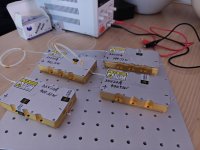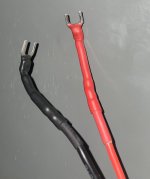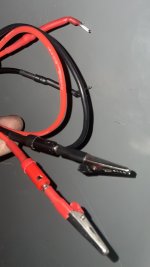LightSourceBlue
New member
- Joined
- Sep 4, 2024
- Messages
- 3
- Points
- 3
I managed to get a deal I could not pass on these 4 x 400W (claimed) IR pump diodes.
I intially tested one prior to any cleaving of the coupled fiber optic cables, and as I started to increase the current (I started low) something started to burn in the fiber optic cable so I quickly stopped and waited for the cleaver I ordered. Today the cleaver arrived and I stripped & cleaved the cable (did not polish though), and again first go something burnt in the cable so I stopped again but this time cleaned the cable as it looked like it was just some left over cladding burning up. Once I cleaned that up, the cable isn't burning up anymore and can burn paper when close to the end of the cable - however not much else even at full power (33v 20amps). I'm hoping nothing has reflected back into the diode and damaged anything when there was some burning in the cable on the first two attempts.
Is it possible to a clean cleave and still have output safely without a plug or polishing?
I'm still waiting to receive the right size SMA 905 ends (the first ones I think are too small - 125um, the core is apparently 220um and estimated the cable is 360um), and also epoxy to do a proper cleave & connection so I can get a lens on.
I intially tested one prior to any cleaving of the coupled fiber optic cables, and as I started to increase the current (I started low) something started to burn in the fiber optic cable so I quickly stopped and waited for the cleaver I ordered. Today the cleaver arrived and I stripped & cleaved the cable (did not polish though), and again first go something burnt in the cable so I stopped again but this time cleaned the cable as it looked like it was just some left over cladding burning up. Once I cleaned that up, the cable isn't burning up anymore and can burn paper when close to the end of the cable - however not much else even at full power (33v 20amps). I'm hoping nothing has reflected back into the diode and damaged anything when there was some burning in the cable on the first two attempts.
Is it possible to a clean cleave and still have output safely without a plug or polishing?
I'm still waiting to receive the right size SMA 905 ends (the first ones I think are too small - 125um, the core is apparently 220um and estimated the cable is 360um), and also epoxy to do a proper cleave & connection so I can get a lens on.








